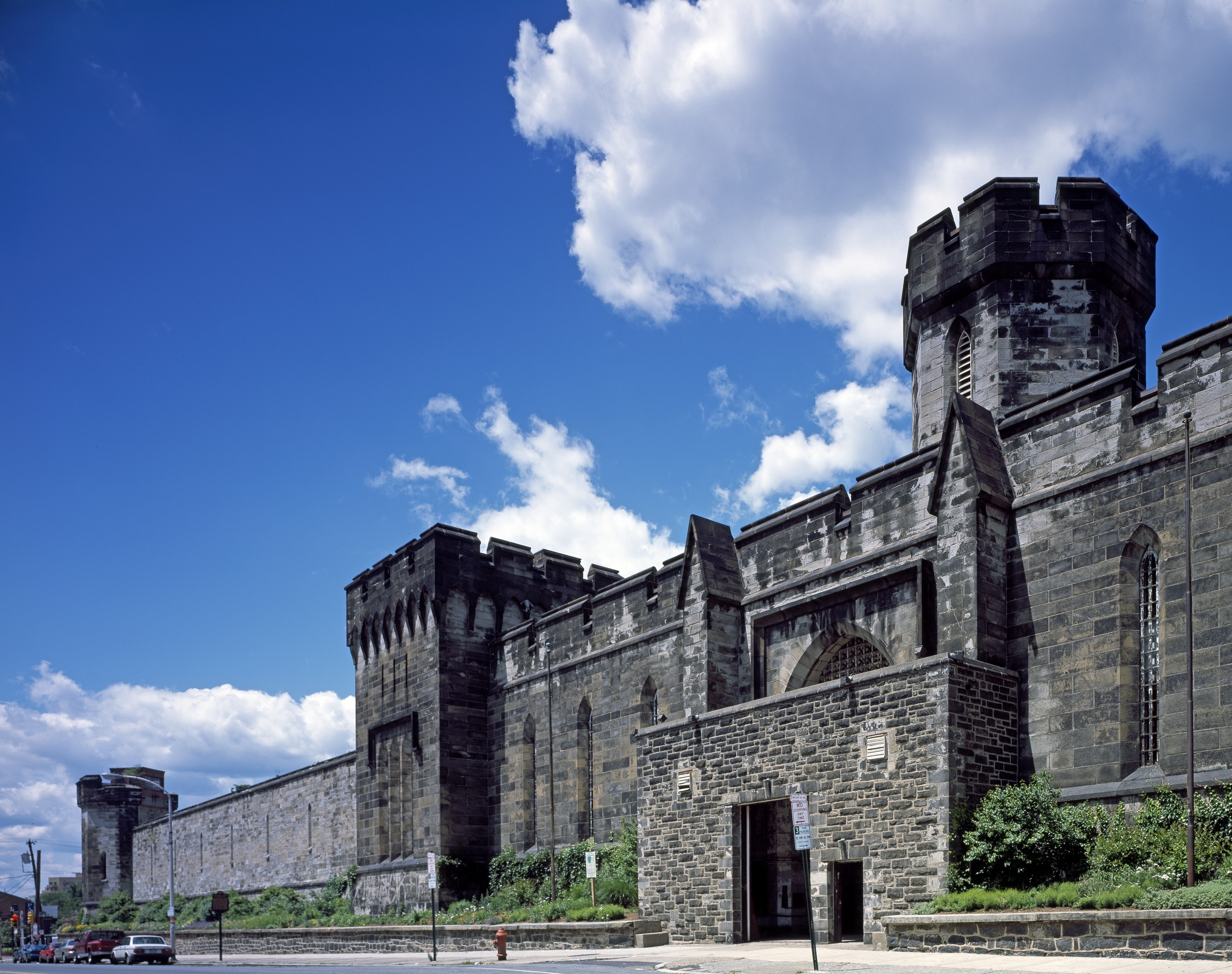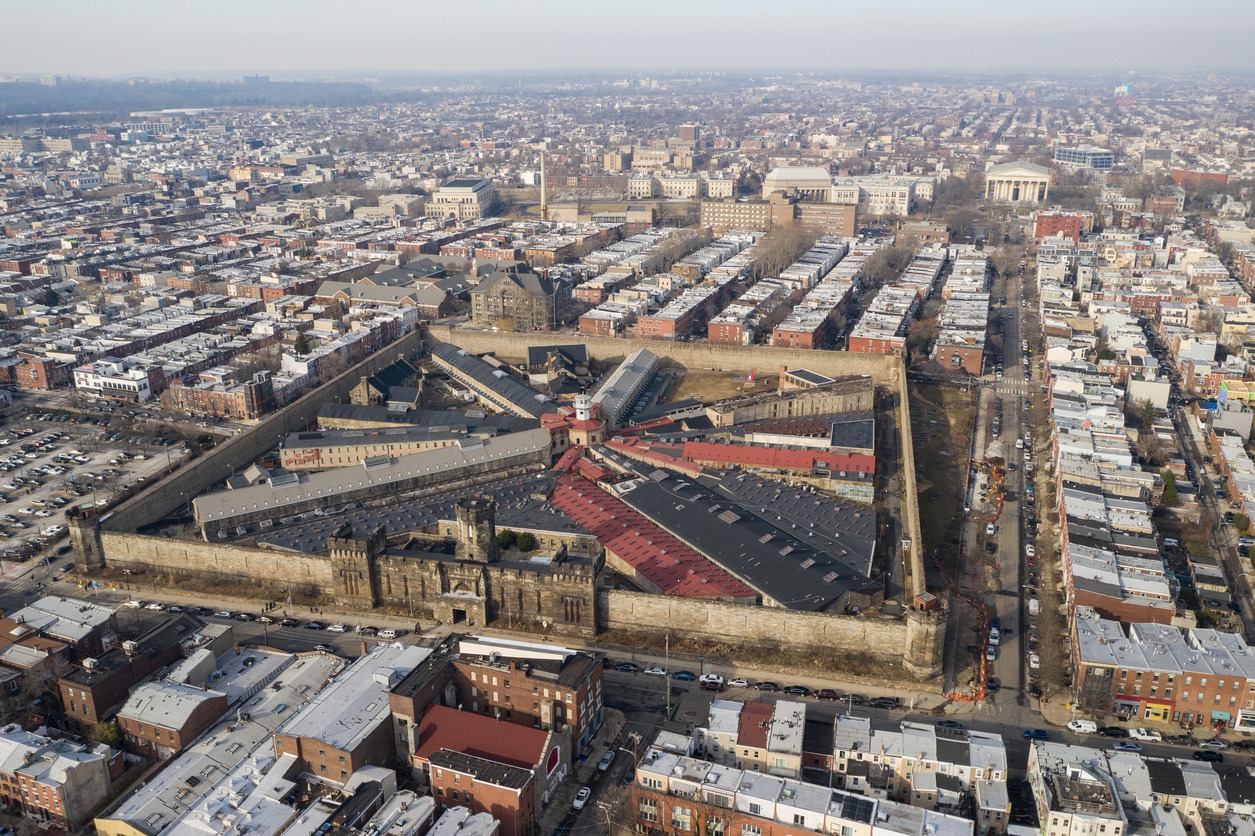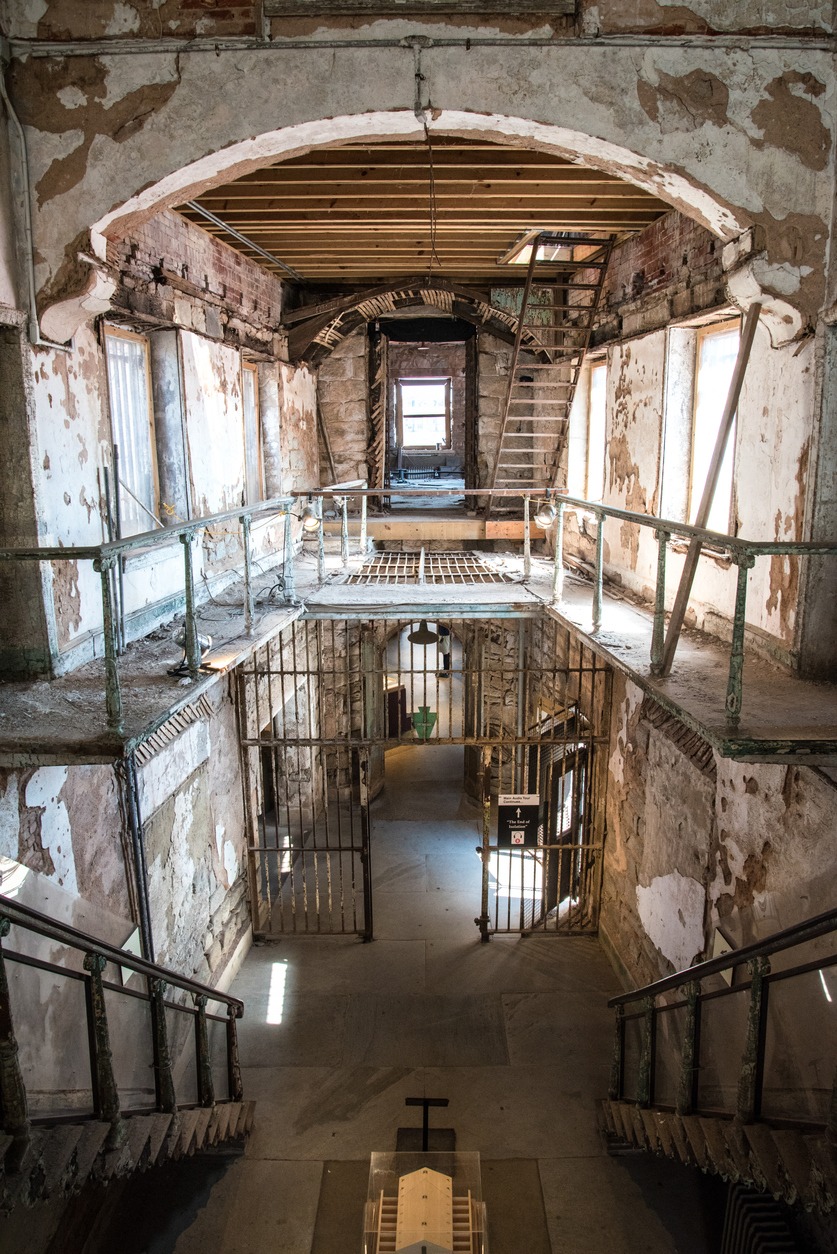Nestled in the heart of Philadelphia, Pennsylvania, the Eastern State Penitentiary stands as a haunting monument to America’s penal history. Its imposing Gothic structure, now abandoned, once housed some of the nation’s most notorious criminals. Today, it offers a chilling yet fascinating glimpse into the past. Operated from 1829 until 1971, Eastern State was one of the first modern penitentiaries. Now a national landmark, the prison was designed in a revolutionary wagon wheel shape which became a globally adopted style. Eastern State held the likes of Willie Sutton and Al Capone. If only walls could talk!
A Revolutionary Design
Eastern State Penitentiary was revolutionary when it opened in 1829. Designed by John Haviland, it was the first true penitentiary, intended to inspire penitence, or true regret, in the hearts of criminals. The architecture, with its radial floor plan, allowed for solitary confinement, a novel concept at the time, aiming to reform rather than punish inmates.
On the dark side of the sightseeing objectives located in Pennsylvania, there is an eleven acres building, that used to host America’s most notorious criminals. Nowadays, Eastern State Penitentiary is a museum, that’s open for anybody who wants to take a look at the first penitentiary ever built.
Back in 1829, the architect John Haviland came up with the radial structure, that was able to host over 250 inmates in separate, single-person small cells. Over the 142 years of functioning, the prison held over 75,000 criminals, both men and women.
Apart from its size and history, there are other architectural details that amaze today’s visitors.
Having 10 feet height and a 8 x 12 feet surface, each cell had a hot water heating, personal toilet and a sink. Back then, it was quite impressive for a prison to offer such services. Also, there were the exercise yards, which were individual as well. The only source of light was a small window close to the ceiling, also known as the “Window of God.” It was often seen as a symbol of the idea, that God is always watching over everyone.
For “Scarface” Al Capone, though, things were different. The notorious criminal was held in the Pennsylvania Penitentiary for 8 months between 1929-1930. His so-called luxury cell had a comfortable bed, a desk and 2 lamps.
While in prison, the inmates heads were covered, so they wouldn’t be able to map the prison mentally. Another reason for it was to avoid violence between criminals; as they couldn’t see each others faces. Despite this, in 1930, while workers were renovating the building, over 30 incomplete tunnels dug by inmates were found.
Notable Features
- Individual Cells: Each inmate had a private cell with a skylight, symbolically referred to as the “Eye of God,” suggesting spiritual reflection.
- Isolation: The system was designed to keep inmates in isolation to reflect on their crimes, a practice that later garnered criticism for its psychological impact.
The penitentiary was ahead of its time in terms of penal reform. It was a model for penal reform, focusing on rehabilitation through solitary confinement. The design and philosophy of Eastern State influenced over 300 prisons worldwide.
Notorious Inmates
The Decline and Closure
Despite its innovative start, Eastern State faced several challenges. By the 20th century, the prison was overcrowded, making the initial reform system impractical. The philosophy of solitary confinement faced increasing criticism for its harsh impact on mental health. The aging facility required extensive and costly maintenance.
The prison officially closed in 1971, after which it was abandoned for many years.
Present-Day Eastern State
Today, the penitentiary is a haunting ruin. It was designated a National Historic Landmark in 1966. The site now operates as a museum, offering tours that showcase its history, architecture, and the experiences of inmates. The museum also hosts educational programs, focusing on the evolution of the American criminal justice system and issues in contemporary corrections.
Conclusion
The Eastern State Penitentiary is more than just an abandoned relic; it’s a profound symbol of America’s evolving approach to crime and punishment. Its crumbling corridors and empty cells offer a stark, poignant reminder of the past, even as they provoke thought and discussion about the future of the penal system. Visiting Eastern State is not only an exploration of a historical site but also a journey into the complexities of human nature and societal responses to crime and rehabilitation.



